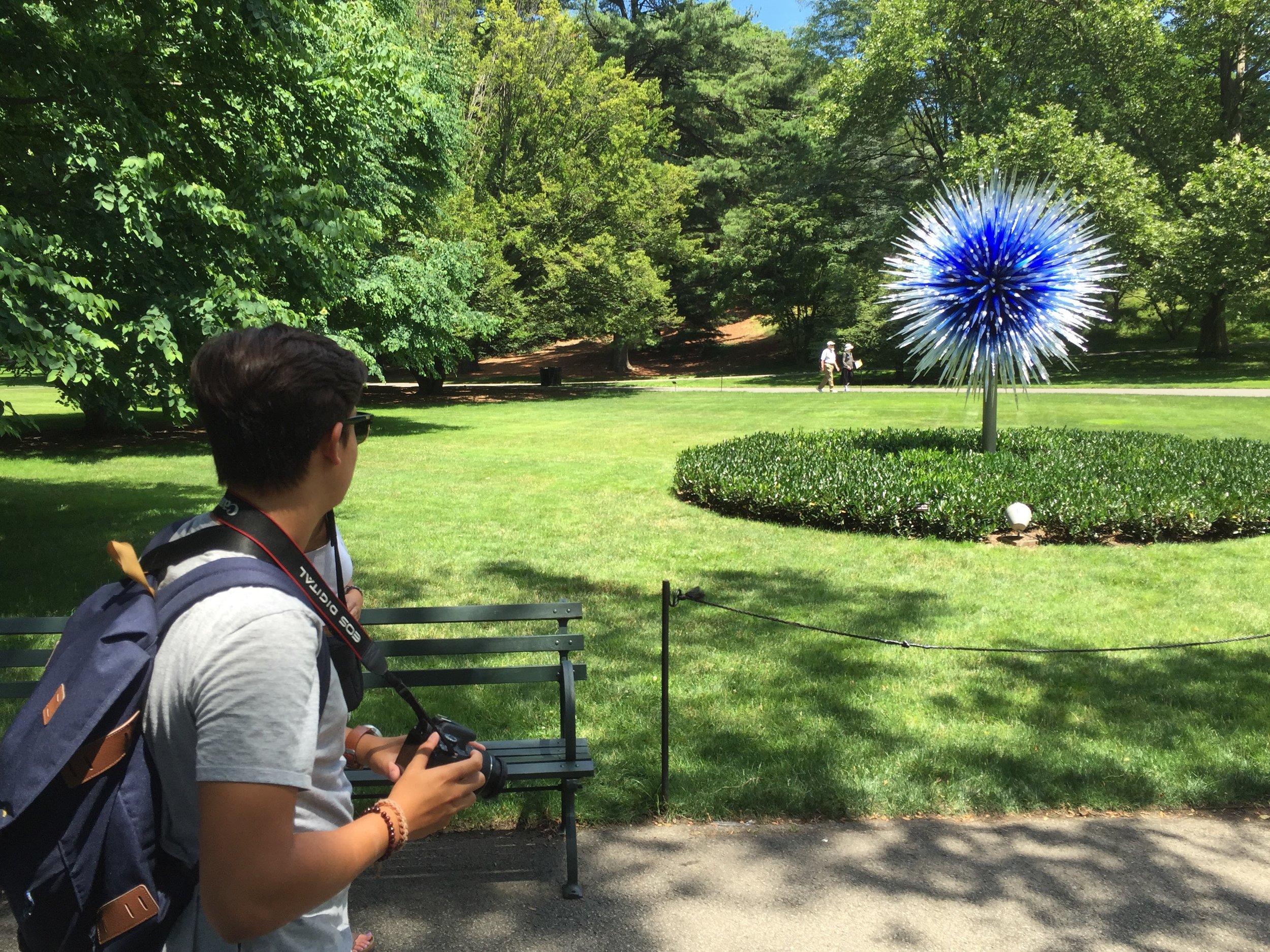The Color of Glass
I have always been intrigued by the unique light and color qualities of glass. My wife is a glass artist which exposes me daily to this medium. People often mistake her glass jewelry for gemstones, which leads to a clarification and a conversation about glass.
Glass is both naturally occurring and man made. The main ingredient of glass is silicone dioxide or sand. Early humans used volcanic Obsidian glass for tools and weapons. The earliest known man-made glass was found in the Mesopotamia region, dated around 3,500 BC. Ancient glass techniques provide hints to modern techniques. In ancient times, glass was a luxury item which was often made more valuable by adding precious metals that offered unique coloring. Stained glass transparent colors are created by mixing metal oxides into molten glass.
Seattle Art Museum - Ancient glass vessel
Seattle Art Museum - Ancient glass vessel
Today, there are even more ways to create colored effects in glass. Precious metals can be vaporized and applied to glass in a vacuum to create dichroic glass which provides intense reflective colors. Much like a Blue Morpho butterfly or a peacock feather, the color does not come from a pigment, but from the angles of nano-particles that refract and reflect light to provide an intensity that no pigment can mimic. Applying vaporized precious metals to glass was first used in a scientific realm in the 1880’s. In the 1960’s NASA utilized it for spacesuit visors that could reflect the intense light of the sun. During the 1970’s, Jerry Sandburg brought this technique to the art world and become the original commercial glass supplier of dichroic glass. The modern process includes combining the precious metals with quartz crystals.
Blue Morpho Butterfly
Iridescent glass is very similar to dichroic but can be both naturally occurring and man-made. Ancient glass artifacts often have a natural iridescent surface created by a combination of the original chemistry of the glass object and the environment in which it was buried. Louis Comfort Tiffany popularized iridescent glass by having it added to his studio’s works. The process primarily includes exposing the hot glass to stannous chloride gas which creates the iridized surface. More modern and safer methods include using specialized glass that reacts to the lack of oxygen which raises the metals to the surface when a flame is focused onto the area.
More about Ancient Glass -
https://ancientglass.wordpress.com/2014/05/19/what-is-the-iridescence-on-ancient-glass/
My wife’s art glass jewelry utilizes both dichroic and iridescent glass in many of her pieces. Depending on the combinations of glass layers, she creates intense color combinations that make each piece one-of-a-kind. Sometimes viewers are convinced there are batteries on the back of her work because of the luminosity. Glass, as an artistic material, has endless color possibilities and can change, depending upon the light in which it is viewed. It is an artistic medium that will attract many admirers and continue to provide unlimited artistic inspiration.
MORE Glass ART
National Capital Art Glass Guild
My wife is a member of the National Capital Art Glass Guild, which features many amazing artists local to the DC Metro area.
This museum in Orlando, Florida has one of the largest collections of Louis Comfort Tiffany glass.
Jack Pine Studio
My wife and I met this glass artist at the Bethesda Fine Arts Festival in 2019. He is from Ohio and has a Studio open to the public in Hocking Hills State Park. His works erupts with color and he uses many of the same techniques which are found in Tiffany vases where precious metals are added to the glass. Jack was friendly, and was very open when talking about his glass art. He was also equally excited to talk about the beautiful and popular Hocking Hills State Park where he is an artist in residence. His works are truly amazing when seen in person and, as with most glass art, the true depth is not able to be captured in photographs.
Chrysler Museum Glass Studio - Norfolk Va
The Chrysler Museum has always been renowned for it’s extensive glass collection and now, with the addition of a functioning glass studio, it is a place to satisfy your love for glass through demonstrations, classes and sales.
The museum’s permanent collection contains many unique examples of Tiffany decorative and stained glass.
Corning has been a significant contributor to the story of glass. Beyond the American icon of CorningWare and Gorilla Glass, Corning NY is a destination for glass art and glass technology.
Check out one of the museum’s artist, Tom Ryder’s.
Here is some additional information related to some of the first dichroic glass.
https://www.cmog.org/article/roman-dichroic-glass-two-contemporary-descriptions
Here is information on different elements found in glass.
https://www.cmog.org/article/chemistry-glass
Netflix’s“Blown Away”
July 12 2019, Netflix introduced a show that features glass artists competing in a judged competition for prize money and scholarships to glass schools and studios. The top winner is given a residency at the Corning Museum of Glass.
Dale Chihuly - https://www.chihuly.com/
Dale Chihuly is a world-renowned glass artist whose whimsical work is often exhibited in popular public spaces. He has helped make Seattle an art glass destination with his Glass Garden exhibit in downtown Seattle. His outdoor garden sculptures have been installed in many famous botanical gardens as part of a touring exhibit.
If you are in Seattle, also be sure to visit the Museum of Glass in Tacoma.
Here are a few snapshots from a temporary Chihuly exhibit I enjoyed at the New York Botanical Gardens.











